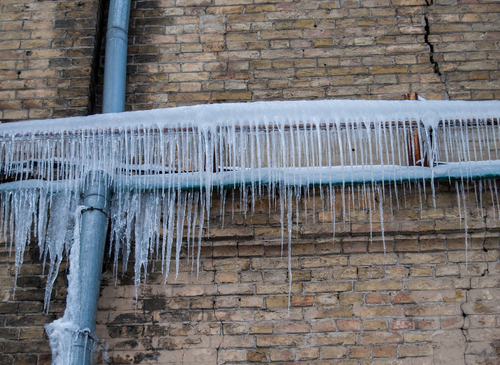Guidance for Avoiding Frozen Pipes in Winter: Professional Insights
Guidance for Avoiding Frozen Pipes in Winter: Professional Insights
Blog Article
We've stumbled on this post on How to prepare your home plumbing for winter weather listed below on the net and reckoned it made perfect sense to write about it with you on this page.

Winter can ruin your plumbing, especially by freezing pipelines. Below's how to avoid it from occurring and what to do if it does.
Introduction
As temperatures drop, the threat of icy pipelines rises, possibly leading to expensive repairs and water damages. Recognizing exactly how to avoid frozen pipes is essential for homeowners in chilly climates.
Avoidance Tips
Shielding susceptible pipelines
Wrap pipes in insulation sleeves or use heat tape to protect them from freezing temperatures. Focus on pipes in unheated or exterior locations of the home.
Home heating strategies
Maintain interior spaces sufficiently warmed, particularly areas with plumbing. Open up cupboard doors to permit warm air to flow around pipes under sinks.
How to recognize icy pipelines
Seek decreased water flow from faucets, uncommon smells or noises from pipelines, and noticeable frost on subjected pipelines.
Long-Term Solutions
Structural adjustments
Consider rerouting pipelines far from exterior walls or unheated locations. Add added insulation to attic rooms, basements, and crawl spaces.
Updating insulation
Buy top notch insulation for pipelines, attics, and wall surfaces. Correct insulation helps keep regular temperature levels and reduces the danger of icy pipes.
Securing Exterior Plumbing
Garden hose pipes and outdoor taps
Separate and drain yard pipes before winter months. Install frost-proof spigots or cover outside faucets with protected caps.
Recognizing Icy Pipelines
What triggers pipelines to freeze?
Pipelines freeze when revealed to temperatures below 32 ° F (0 ° C) for expanded durations. As water inside the pipes freezes, it increases, taxing the pipeline walls and potentially causing them to break.
Risks and damages
Frozen pipes can result in water disruptions, residential property damage, and costly repair work. Ruptured pipes can flood homes and trigger comprehensive architectural damage.
Indications of Frozen Pipes
Recognizing frozen pipes early can prevent them from breaking.
What to Do If Your Pipelines Freeze
Immediate activities to take
If you believe icy pipelines, maintain taps open to alleviate stress as the ice thaws. Utilize a hairdryer or towels taken in warm water to thaw pipes gradually.
Conclusion
Stopping icy pipes needs positive steps and fast reactions. By recognizing the causes, indicators, and preventive measures, home owners can protect their plumbing during cold weather.
5 Ways to Prevent Frozen Pipes
Drain Outdoor Faucets and Disconnect Hoses
First, close the shut-off valve that controls the flow of water in the pipe to your outdoor faucet. Then, head outside to disconnect and drain your hose and open the outdoor faucet to allow the water to completely drain out of the line. Turn off the faucet when done. Finally, head back to the shut-off valve and drain the remaining water inside the pipe into a bucket or container. Additionally, if you have a home irrigation system, you should consider hiring an expert to clear the system of water each year.
Insulate Pipes
One of the best and most cost-effective methods for preventing frozen water pipes is to wrap your pipes with insulation. This is especially important for areas in your home that aren’t exposed to heat, such as an attic. We suggest using foam sleeves, which can typically be found at your local hardware store.
Keep Heat Running at 65
Your pipes are located inside your walls, and the temperature there is much colder than the rest of the house. To prevent your pipes from freezing, The Insurance Information Institute suggests that you keep your home heated to at least 65 degrees, even when traveling. You may want to invest in smart devices that can keep an eye on the temperature in your home while you’re away.
Leave Water Dripping
Moving water — even a small trickle — can prevent ice from forming inside your pipes. When freezing temps are imminent, start a drip of water from all faucets that serve exposed pipes. Leaving a few faucets running will also help relieve pressure inside the pipes and help prevent a rupture if the water inside freezes.
Open Cupboard Doors
Warm your kitchen and bathroom pipes by opening cupboards and vanities. You should also leave your interior doors ajar to help warm air circulate evenly throughout your home.

I found that content on How to prepare your home plumbing for winter weather when browsing on the internet. Enjoyed our article? Please quickly share it. Let somebody else locate it. Bless you for being here. Kindly visit our website back soon.
Browse Our Site Report this page